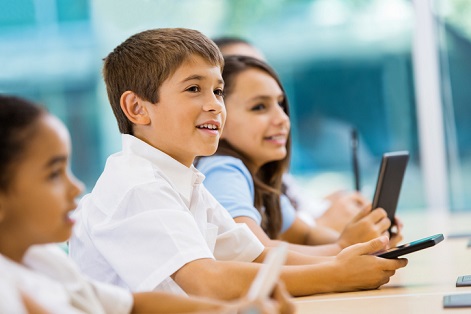
High school students, developers and data scientists recently converged in Sydney for a national competition that encourages kids to solve important social and environmental issues using Artificial Intelligence (AI).
The AI for Good Challenge – held by Microsoft Australia and professional learning organisation, Education Changemakers – received 545 applications from 325 registered schools across Australia.
The Challenge asks students in groups of two or three to come up with an AI concept that could make an environmental or societal difference under the categories of AI for Accessibility, Earth or Humanitarian Action.
Travis Smith, Microsoft’s K-12 spokesperson and academic engagement lead, said the Challenge finals, held on August 16, revealed some welcome surprises.
“One of the most encouraging things we saw at the Challenge was an equal male-female participation rate, and that’s great because we wanted to ensure there was more diversity in terms of kids’ engagement with AI,” Smith told The Educator.
“If we want AI to behave like white middle-aged men, we’re going in the right direction – but we need a diverse range of inputs and cultures to contribute to the field of AI so we can ensure that it is unbiased.”
‘There’s a job for everyone in AI’
Travis said another powerful aspect of the Challenge was that it encouraged kids who were not necessarily I.T-minded to recognise that there is a place for them in the AI industry.
“One of the first entries received was from a history teacher and his students, and this was very unexpected, but they had obviously found some linkage to their curriculum and were able to run this as a mini project.”
Smith said an important reason that Microsoft and Education Changemakers wanted different types of kids to be involved was because more divergent and creative thinkers are needed to solve some of the world’s most complex problems.
“Some of the ideas the kids came up with were phenomenal in terms of the depth at which they were thinking, as well as local issues versus global issues,” he said.
“One of the winners was a group of girls that prototyped the idea of an AI-led midwife that could give advice and monitor ladies giving birth in areas that do not have a hospital and have no real knowledge of modern medical practices.”
Travis pointed to the other winning team – a group of boys, one of whom had Type 1 Diabetes. The team developed an app that retrieves the data from a child’s blood-sugar levels and enters that data into an app. The kids were then incentivised on how much time they spend within the app’s ‘green zone’ which means their blood-sugar level is appropriate.
“They then gamified this experience and the students were able to use coins they could use as currency in their favourite games and apps,” he said.
“The idea was not really about monitoring blood-sugar levels, but more about how to make a young child to care about this important issue and monitor themselves, because mum and dad cannot always be there.”
Travis said another example he found “brilliant” was “The Feed” – an app for people with a mental illness who want to be less exposed to negative messaging in today’s media.
“Depending on the user’s diagnosis, the app only shows them content that is positive and help them. It would filter out any bullying, negative images or messages on social media platforms,” he explained.
“All in all, the Challenge really highlighted kids’ ability to come up with fantastic ideas and demonstrate how their thinking is so untethered in terms of being creative and solving these critical challenges.”
Helping educators get AI-savvy
Smith said that while AI a field that is quickly emerging across the global business landscape, an IT teacher cannot be expected to have the cutting-edge information about AI that a company like Microsoft has.
“The only way to really address that, and what we’ve done in the AI for Good Challenge, is to design the curriculum for the teachers,” he said.
“We created a set of assets – including Powerpoint presentations with modules – that are freely available for educators to download. Each module has embedded videos of experts and Education Changemakers talking about AI.”
Smith said teachers end up with a “ready to go classroom resource” that they can put up on the screen and learn alongside their students.
“They can be safe in knowing that the content is correct in terms of an IT company giving them that content, but also that it is digestible enough for the age group that participated in the recent Challenge,” he said.
“We also provide teachers with a PDF guide on how to implement the professional modules with suggested activities and discussions created by teachers both within the Microsoft and Education Changemakers teams. These allow teachers to be confident in knowing they can teach AI to their students.”


